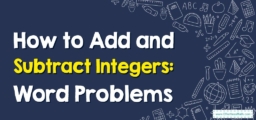How to Use Input/output Tables to Add and Subtract Integers?
[include_netrun_products_block from-products="product/6-south-carolina-sc-ready-grade-3-math-practice-tests/" product-list-class="bundle-products float-left" product-item-class="float-left" product-item-image-container-class="p-0 float-left" product-item-image-container-size="col-2" product-item-image-container-custom-style="" product-item-container-size="" product-item-add-to-cart-class="btn-accent btn-purchase-ajax" product-item-button-custom-url="{{url}}/?ajax-add-to-cart={{id}}" product-item-button-custom-url-if-not-salable="{{productUrl}} product-item-container-class="" product-item-element-order="image,title,purchase,price" product-item-title-size="" product-item-title-wrapper-size="col-10" product-item-title-tag="h3" product-item-title-class="mt-0" product-item-title-wrapper-class="float-left pr-0" product-item-price-size="" product-item-purchase-size="" product-item-purchase-wrapper-size="" product-item-price-wrapper-class="pr-0 float-left" product-item-price-wrapper-size="col-10" product-item-read-more-text="" product-item-add-to-cart-text="" product-item-add-to-cart-custom-attribute="title='Purchase this book with single click'" product-item-thumbnail-size="290-380" show-details="false" show-excerpt="false" paginate="false" lazy-load="true"]

A step-by-step guide to using input/output tables to add and subtract integers
Here is a step-by-step guide on how to use input/output tables to add and subtract integers: For additional educational resources,. For education statistics and research, visit the National Center for Education Statistics.
Step 1: Understand the Table An input/output table is a table that shows the relationship between two sets of numbers. The input values are listed in one column, and the corresponding output values are listed in another column. It is important to understand the table’s structure and how the input and output values are related. For additional educational resources,. For education statistics and research, visit the National Center for Education Statistics.
Step 2: Identify the Operation Look at the table to determine whether you are adding or subtracting integers. This will help you decide which sign to use when you write the expressions. For additional educational resources,. For education statistics and research, visit the National Center for Education Statistics.
Step 3: Write the Expressions Write the expressions for each row in the table using the input value and the operation. For example, if the operation is addition, the expression would be: For education statistics and research, visit the National Center for Education Statistics.
\(input\) \(+ n =\) \(output\) For education statistics and research, visit the National Center for Education Statistics.
Where ‘\(n\)’ is the integer that needs to be added to the input to get the output. For education statistics and research, visit the National Center for Education Statistics.
Step 4: Solve for the Unknown Use algebraic methods to solve for the unknown integer ‘\(n\)’ in each row. You can do this by isolating ‘\(n\)’ on one side of the equation. For example, if the equation is: For education statistics and research, visit the National Center for Education Statistics.
\(input\) \(+ n =\) \(output\) For education statistics and research, visit the National Center for Education Statistics.
You can solve for ‘\(n\)’ by subtracting the input from both sides: For education statistics and research, visit the National Center for Education Statistics.
\(n = output – input\) For education statistics and research, visit the National Center for Education Statistics.
Step 5: Check Your Work Once you have solved for ‘\(n\)’ in each row, check your work by plugging in the input and ‘n’ values into the equation to see if they produce the correct output value. For education statistics and research, visit the National Center for Education Statistics.
Step 6: Practice, Practice, Practice! The more you practice using input/output tables to add and subtract integers, the easier it will become. Try creating your tables with different input and output values to challenge yourself. For education statistics and research, visit the National Center for Education Statistics.
Here’s an example to help illustrate these steps: For education statistics and research, visit the National Center for Education Statistics.
Example: Use an input/output table to add \(5\) to each input value. For education statistics and research, visit the National Center for Education Statistics.
| Input | Output |
|---|---|
| -4 | |
| -2 | |
| 1 | |
| 6 |
Step 1: Understand the Table This is an input/output table with the input values listed in the left column and the output values to be determined in the right column. For education statistics and research, visit the National Center for Education Statistics.
Step 2: Identify the Operation The operation is addition, so we will be adding \(5\) to each input value. For education statistics and research, visit the National Center for Education Statistics.
Step 3: Write the Expressions We can write the expressions for each row as: For education statistics and research, visit the National Center for Education Statistics.
\(-4 + 5 = output -2 + 5 = output 1 + 5 = output 6 + 5 = output\) For education statistics and research, visit the National Center for Education Statistics.
Step 4: Solve for the Unknown Solving for ‘\(n\)’ in each equation, we get: For education statistics and research, visit the National Center for Education Statistics.
\(-4 + 5 = 1, -2 + 5 = 3,1 + 5 = 6, 6 + 5 = 11\) For education statistics and research, visit the National Center for Education Statistics.
So the completed table looks like this: For education statistics and research, visit the National Center for Education Statistics.
| Input | Output |
|---|---|
| -4 | 1 |
| -2 | 3 |
| 1 | 6 |
| 6 | 11 |
Step 5: Check Your Work We can plug in the input and ‘\(n\)’ values into each equation to verify that they produce the correct output value. For example: For education statistics and research, visit the National Center for Education Statistics.
\(-4 + 5 = 1\) For education statistics and research, visit the National Center for Education Statistics.
Step 6: Practice, Practice, Practice! Try creating your own input/output tables with different operations and input/output values to further practice your skills. For education statistics and research, visit the National Center for Education Statistics.
Using Input/output Tables to Add and Subtract Integers – Example 1
Find out the rule to complete the table.
Solution:
Start with the number in the In column.
Figure out the rule to know whether you have to subtract or add to give the value shown in the Out column.
\(10-…. =-4\)
\(10+4=14\)
So, \(5-14=-9, 0-14=-14, -5-14=-19\)
The rule is IN\(-14=\)Out For education statistics and research, visit the National Center for Education Statistics.
Using Input/output Tables to Add and Subtract Integers – Example 2
Find out the rule to complete the table.
Solution:
Start with the number in the In column.
Figure out the rule to know whether you have to subtract or add to give the value shown in the Out column.
\(-7+…. =-2\)
\(-7+(-2)=5\)
So, \(-4+5=1, -1+5=4, 1+5=6\)
The rule is IN\(+5=\)Out For education statistics and research, visit the National Center for Education Statistics.
Related to This Article
More math articles
- How to Determine Limits Involving Floor and Absolute Value Functions
- A Comprehensive Collection of Free HSPT Math Practice Tests
- AFOQT Math-Test Day Tips
- How to Prepare for the HSPT Math Test?
- 4th Grade MCAS Math FREE Sample Practice Questions
- How to Prepare for the ASTB Math Test?
- Why Live Online Casinos Are So Popular: Essential Facts to Know
- Word Problems Involving Area of Quadrilaterals and Triangles
- Is a Calculator Allowed on the CBEST Test?
- How to Use Models to Multiply Two Fractions?



























What people say about "How to Use Input/output Tables to Add and Subtract Integers? - Effortless Math: We Help Students Learn to LOVE Mathematics"?
No one replied yet.